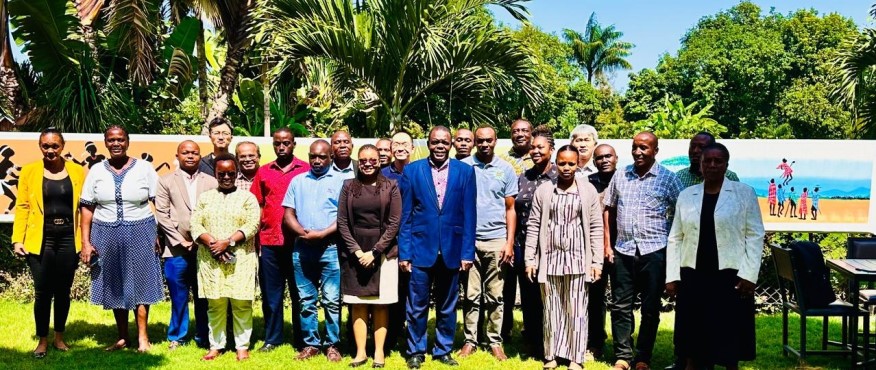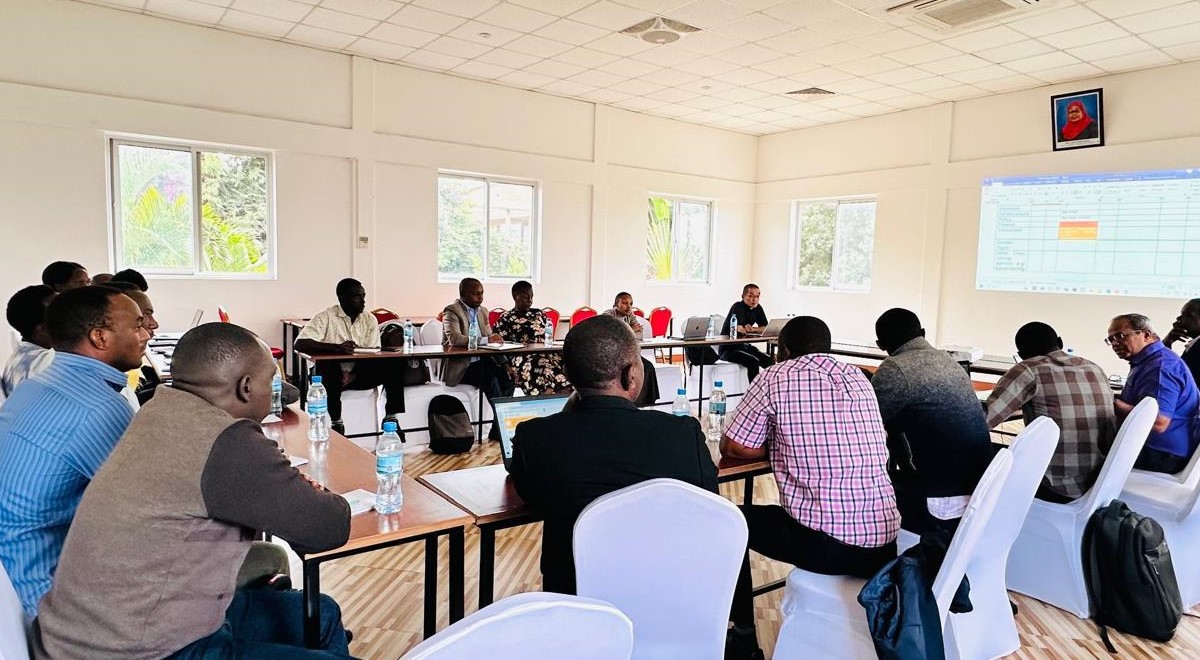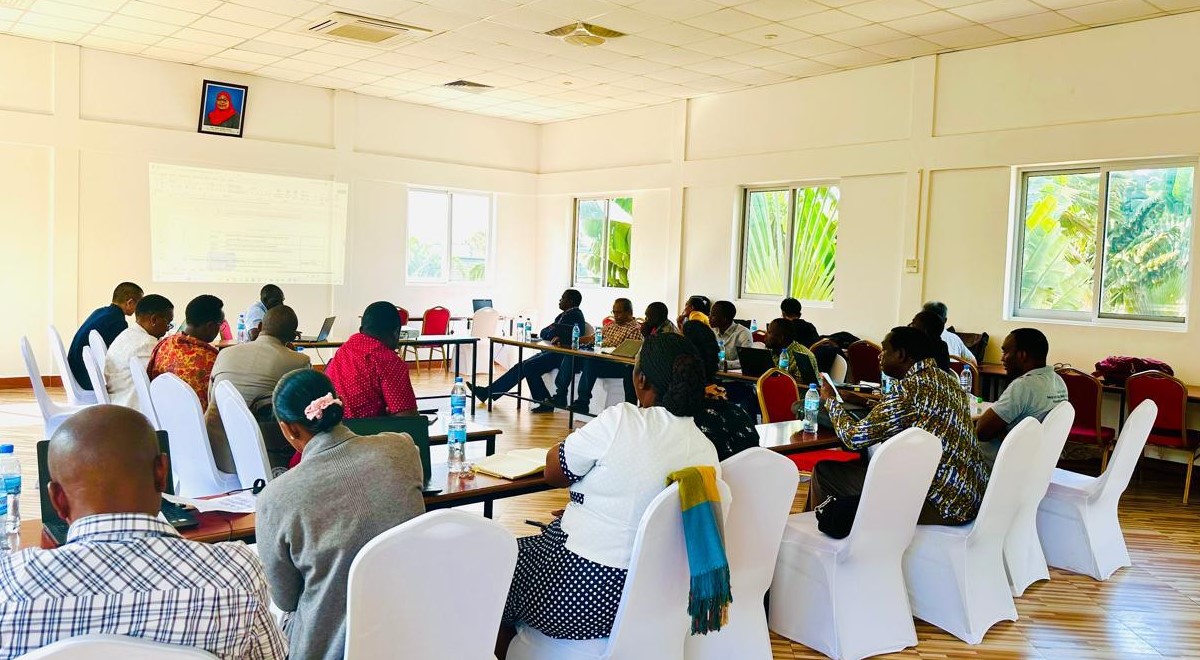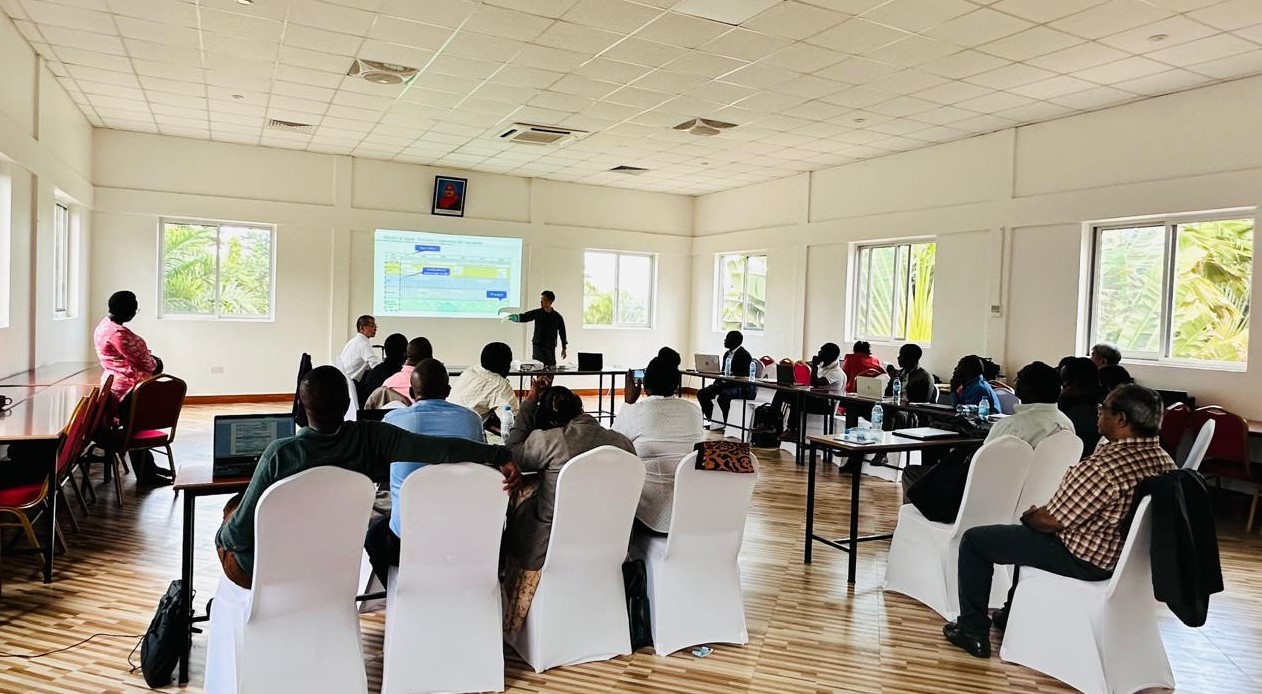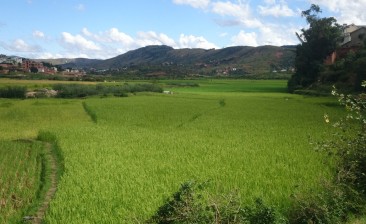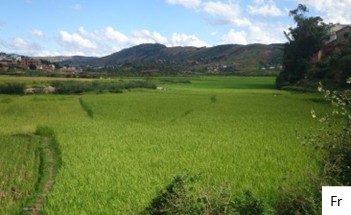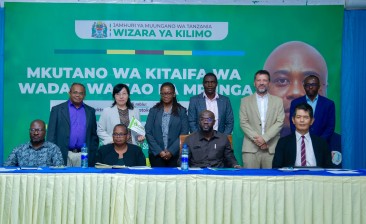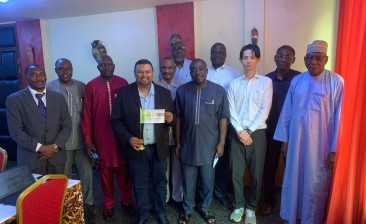Tanzania, June 2024
Kick-Off Meeting on Monitoring & Evaluation of NRDS-2 in Tanzania
Tanzania is one of the largest rice producers in East African region. Grown as a food-and-cash crop, rice farming is an important livelihood activity for several thousands of smallholder farmers across Tanzania. Under its first phase of NRDS-I (2008-2019), Tanzania increased its rice production by 2.4-fold. Besides helping achieve self-sufficiency, the doubling of domestic rice production led to increase in exports (by 12-fold). Hence under NRDS-II, Tanzania has set a goal of becoming a ‘regional’ market leader by further doubling of domestic rice production. To monitor and evaluate the progress in implementation of the NRDS-II, the CARD initiative helped conduct a baseline survey in October-2022. Baseline data for a total of 16 indicators, including 4-overall, 2-each under Resilience, Industrialization, Competitiveness, and Empowerment categories, and two country-specific indicators (fertilizer adoption rate and postharvest loss) were established.
To initiate monitoring and evaluation (M&E) process on the performance of progress on these 16 indicators during 2023-24, the NRDS taskforce requested CARD Secretariat to organize a kick-off meeting/workshop. The specific objectives of the workshop are to (i) reach a consensus on indicators, (ii) apprise gaps in funding along the rice value chain, and (iii) update NRDS-2 concept notes that were developed in 2020.
Kick off meeting on M&E in Tanzania
The workshop was organized at Hotel Kili Home Garden in Moshi between 11th and 13th of June. About 15 NRDS-2 taskforce members and 4 JICA-Tanzania staff participated in the meeting. Focal point of the NRDS-2, Eng. Anna Mwangamilo could not physically attend the meeting, but joined the sessions in the morning of 11th and 13th June. Eng. Fadhili Mngazija substituted the roles of the Focal point at the meeting. Major outputs from the meeting are summarized below:
Consensus on indicators and data collection protocols
The Tanzania M&E baseline report was finalized in 2022 whereby the 12 CARD indicators (4 Overall and 2 each in Resilience, Industrialization, Competitiveness and Empowerment) and 2 additional Tanzania specific indicators (Fertilizer adoption rate and post-harvest losses), baseline figures and data sources were established. Upon apprising the definitions, data sources and data collection methodologies for all the indicators; the participants agreed to retain and continue to monitor the 12 CARD indicators, the 2 additional Tanzania Specific indicators and in cooperate the Retail price indicator that was not captured during the baseline. Furthermore, the taskforce designated responsibilities amongst themselves on collecting secondary and primary data from the pinpointed data sources through a consensual agreement as delineated in the table below: –
| Code | Indicator | Unit | Data need | Data source | Responsibilities for data collection | |
| Who | When | |||||
| O1 | Quantity of Paddy Produced | Tons | Secondary | MOA (Ministry of Agriculture), Department of Agri Marketing and food security (DMF)-Food production forecasting report | Mr. Andes Kakiko | 15th July |
| O2 | Total area harvested | Ha | Secondary | MOA (Ministry of Agriculture), Department of Agri Marketing and food security (DMF)-Food production forecasting report | 15th July | |
| O3 | Yield | t/Ha | Secondary | O1/O2 | 15th July | |
| O4 | Self-Sufficiency rate | % | Secondary | MOA (Ministry of Agriculture), Department of Agri Marketing and food security (DMF)-Food production forecasting report | 15th July | |
| R1 | Area under Irrigation | Ha | Secondary | National Irrigation Annual Data (NIRC) | Madam Naomi Mcharo | 30th June |
| R2 | Quantity of resilient variety seeds | Tons | Secondary | TOSCI (Tanzania Official Seed Certification Institute)- Seed Certification Data
-Agriculture seed Angency |
Dr. Munguatosha Ngomuo | 30th June |
| I1 | Level of industrial milling capacity | % | Secondary | -MOA, Division of Mechanization and value addition
-Po-RALG -M&E unit |
1)Mr. Fadhili-MOA
2)Mr Mwakaje-PO-RALG 3)Mr.Katemi (M&E) |
30th July |
| I2 | Level of mechanization in production | Units | Secondary | -MOA,Division of Mechanization and value addition | Mr. Fadhili | 15th July |
| C1 | Share of local rice in the ‘regional markets’ | % | Secondary | 1)TRA (Tanzania Revenue Authority)
2)FAO, EAC |
1)Mr. Anded Kakiko-MOA
2)Madam Mary Enock 3)Mr. Geofrey Rwiza, Rice council of Tanzania |
30th July
15th July |
| C2 | Quantity of high-yielding variety seeds | ton | Secondary | TOSCI-Seed Certification Data | Dr. Ngomuo | 30th June |
| E1 | Smallholder farmers’ accessibility to financial services | % | Secondary | 1)PO-RALG (From Dristict executive offices)
2)Directory Crop Development -AGITF |
1)Madam Mwakaje-PO-RALG
2)Mr.Salehe Gamba |
30th July |
| E2 | Smallholder farmers’ accessibility to technical training and services | % | Secondary | 1)Directory of Crop Development (DCD)
2)Directorate of Training and research |
1)Mr. Matungwa
2)Madam Gindu |
15th July |
| P | Retail price of Tanzania rice (Grade 2; includes all TZA varieties-SUPA, SARO-5, etc) in EAC regional markets (Kenya, Burundi, Uganda and Rwanda) in comparison with; major supplier of imported rice | Local currency or USD per Kg | Primary | Primary data from Imports-retailers in Kenya, Uganda, Rwanda and Burundi | Mr. Geofrey Rwiza (RTC) | 15th July |
| TZA-Specific 1 | Fertilizer adoption rate | Kg/Ha | Secondary | DCD, Tanzania Fertilizer Regulatory Authority (TFRA) | Mr. Gamba | 15th July |
| TZA-Specific 2 | Post-Harvest losses | % | Secondary | Division of Mechanization and Value addition (DMV) | Mr. Fadhili | 15th July |
Analyses of gaps in current interventions
The NRDS taskforce members identified gaps in funding for NRDS-2 development by reviewing the current interventions and their level of meeting the needs, using a Subsector Intervention Element Matrix (SIEM). SIEM allows systematic assessment of the various interventions (listed in the first column) across the rice value chain segments (listed in the first row). The participants judged the importance of gaps between the available interventions and demand using a color codes; wherein red color indicates the current interventions are extremely insufficient, orange cells represent on-going interventions do not adequately address the needs, white cells indicate interventions that are important can be prioritized after addressing the demands in red and orange cells. Light green cells represent areas that are somewhat adequately addressed by the current interventions and hence do not need immediate attention.
Review of concept notes on NRDS-2
After validation of the NRDS-2, CARD organized a working week for the NRDS-2 taskforce members in August 2020 to formulate project concept notes for achieving the objectives of the NRDS-2. The taskforce members developed a total of 10 concept notes, the execution of which could lead to implementation of the NRDS-2. Due to COVID-19 pandemic that ensued and the shifting and preparation of focus on M&E, the taskforce members could not effectively follow up on the sharing of concept notes with potential stakeholders. Since Annual Rice Sector Review Meeting (ARSRM) under the M&E process presents an opportunity to share these concept notes to the stakeholders, the taskforce members reviewed the relevance and updated the concept notes. The taskforce members were divided into four groups with one of the members from within each group designated as group-leader. Each group were given 2-3 concept notes for updating. In the light of the gaps identified (section 2-b), the group members discussed the validity of concepts proposed and accordingly made amendments on the concept note. Through a peer-reviewing process, the group leaders from each group then presented the amended concept notes to all the participants for consensus. The participants made several suggestions to the amended concept notes for consideration and finalization by the groups.
Way forward
Going forward, the NRDS taskforce will incorporate the suggestions received through the peer-review of the concept notes. The data that will be collected for the various indicators by the taskforce members will be reviewed and analyzed through another 2-day workshop by mid-August. Planning for organizing Annual Rice Sector Review Meeting will also be made during the proposed workshop.
